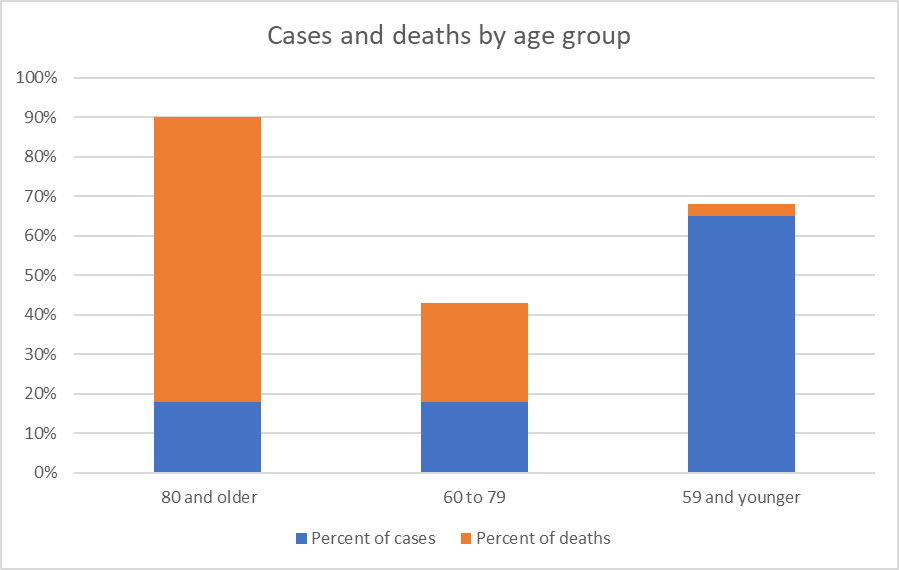Because of my engineering background, I approach most problems in a similar way: find the biggest bottleneck, optimize it, repeat. Avoid micro-optimizations.
To me, the way this virus attacks (and kills) the elders is the biggest bottleneck that we still have to solve:
Those who are 80 and older account for 72 per cent of deaths in Canada. But only 18 per cent of cases are in this age group.
More-often hospitalized, those who are 60 to 79 represent 25 per cent of deaths. The number of infected in this age group is similar to those 80 and over, accounting for 18 per cent of Canada’s total.
Those 59 and younger only make up three per cent of deaths — despite accounting for 65 per cent of cases.
Source: Who has died from COVID-19 in Canada? | Radio-Canada (radio-canada.ca)
In other words:
- People over 60 represent 36% of the cases and 97% of the deaths in Canada
- People under 60 represent 65% of the cases and 3% of the deaths.
While the stats are from June, I assume that the ratios remain similar after the second wave.
Is there anything that we, as society, could have been done different to protect people over 60, and specially over 80, in order to ovoid the lockdowns and other measures that while somehow limit the virus propagation, create other long term problems, are unsustainable and sometimes feel arbitrary?
Right now I don’t feel very optimistic about our overall approach and to quote my favorite character from Animal Farm:
Windmill or no windmill, life would go on as it had always gone on – that is, badly.
Benjamin The Donkey
